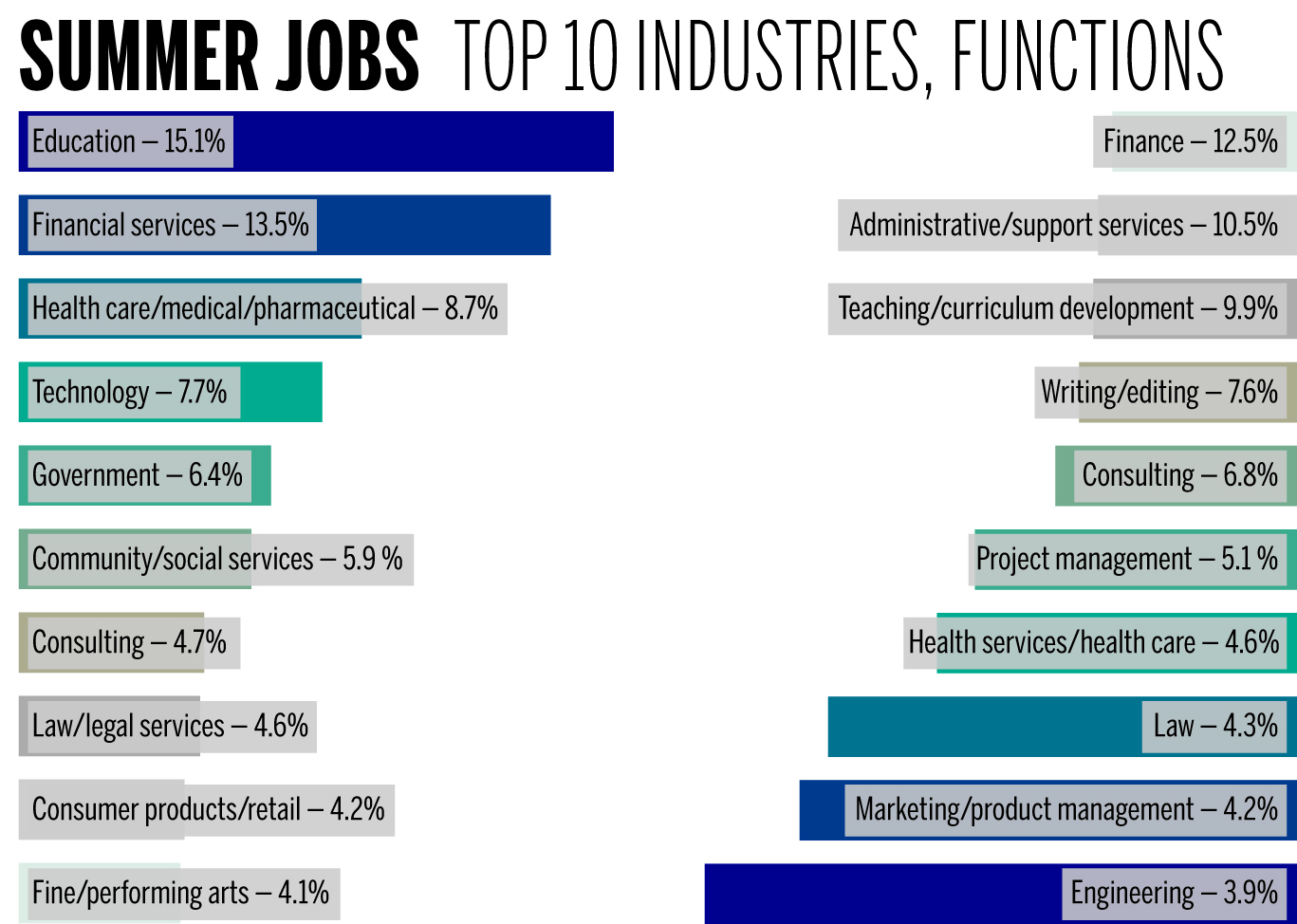
Hitting a record 81 percent response rate, this year’s Office of Career Strategy Summer Activities Survey garnered the most representative data ever collected about students’ summer engagements.
Education was the industry in which the greatest number of Yale students worked in last summer, with finance coming in second place. More Yale students also worked the health care and technology industries. As in years prior, more students took paid internships and paid jobs last summer, the survey showed.
The survey painted a more vivid picture of Yale students’ summer work due to OCS’s updated data-collection procedures and new survey questions, according to Career Services Director Jeanine Dames. The survey’s response rate increased from roughly 60 percent in years prior to 81 percent, which Dames attributed to students’ ability to access the survey through the OCS website. Changes to survey questions will now allow OCS to better track students throughout their Yale careers and after graduation, when alumni take a “first destination” survey within six months after graduation.
“We modified some of the reporting categories for sector, industry and function to align with the categories of the First Destination Survey,” Dames said. “That will allow us to more consistently track students’ choices throughout their time at Yale and after graduation.”
Almost three-quarters of student respondents stayed in the U.S. for their summer activities, with most students working in Connecticut, New York, California, the District of Columbia and Massachusetts.
The results also showed that more than 77 percent of Yale students worked in an internship at least slightly related to their field of study, an uptick over figures from previous years.
The addition of a “sector” category showed that student activities over this past summer were almost perfectly split between nonprofit or public organizations and the private sector.
The increased response rate and the changes in the survey do, however, make this year’s results difficult to compare to those of years prior. The changes shown by the 2016 summer survey are hard to attribute to either the changes in student interests or the increase in survey response rate.
On the whole, though, Dames said the survey seems to confirm the direction of many summer activity trends that have been developing since 2013, when the survey was first conducted. These include a shift toward more paid opportunities and fewer unpaid internships, a decline in laboratory and field research and a rise in students working in education and health care.
This decline in laboratory research is occurring at the same time that more Yale students are seeking opportunities in STEM. Dames suggested this trend could be due to the fact that national grant funding is on the decline.
Connor Dube ’19, who conducted math research at Yale last summer, noted that the decline in research positions may be due to the fact that Yale students can often only receive a standard funding amount for work at Yale laboratories, and thus many students take more lucrative positions elsewhere.
“Taking external jobs is also seen as more crucial to landing jobs after graduation, since most STEM undergrads don’t really expect to go to grad school here,” Dube said.
Additionally, the survey revealed that the majority of Yale summer activities last summer lasted eight weeks or more, and most Yale students engaged in multiple activities over the summer.
Finance continues to be a prominent industry for Yale students, though the number of students in the industry fell more than two percentage points from last year’s survey.
The number of students performing writing and editing roles during their summer activities also increased in this year’s survey after a period of decline between 2014 and 2015. English and classics major Daniel Flesch ’19 said he thought trends in writing and editing positions might be difficult to track because how much the industry is changing at present due to online media.







